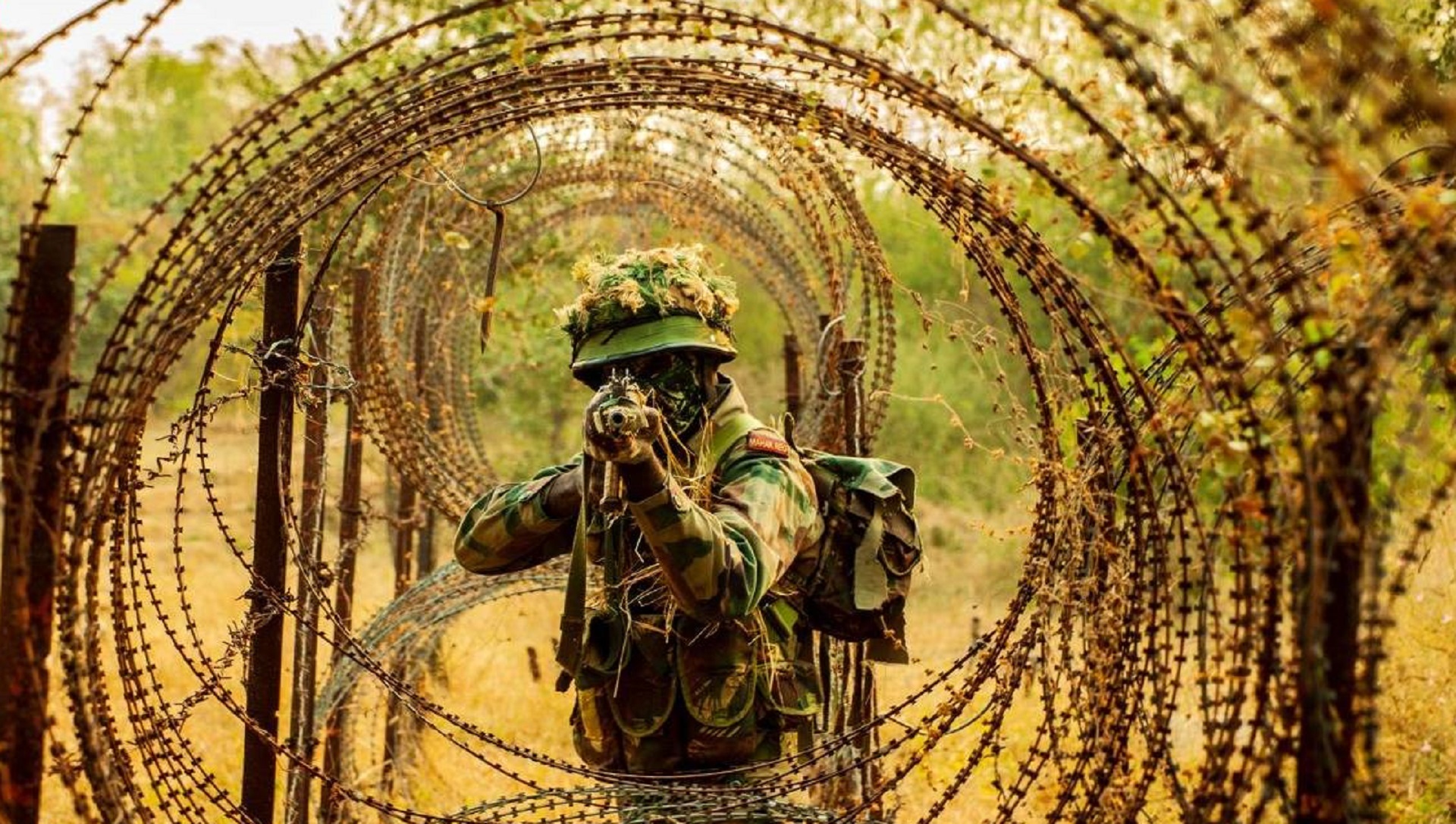

The deadly scuffle that took place between the Indian and Chinese troops in the Galwan Valley of Eastern Ladakh region in June 2020, quickly morphed into a major military stand-off between the two Asian nuclear powers. Despite holding 13 rounds of Corps Commander level talks, both sides have failed to achieve a complete de-escalation so far.
Recently, the diplomats of the two countries held a virtual meeting within the framework of Working Mechanism for Consultation and Coordination (WMCC) on India-China border affairs and it has been agreed that another round of talks must be held at an ‘early date’ to resolve the ‘remaining issues’.
The social media is abuzz with reports claiming that China is building border villages and critical infrastructure in the areas on its side of the Line of Actual Control (LAC) that it shares with India. China has also constructed multiple border villages in Doklam, which is the region that it disputes with Bhutan. Apparently, this is the same region that witnessed a stand-off between the Indian and Chinese troops back in 2017. OPINION: Vir Das Did Not Tickle Anything
As per satellite images, China is already building large heliports in the Tibetan region and is upgrading many existing ones as well. With de-escalation still awaited at Hot Springs and Depsang in Eastern Ladakh, all of this raises some serious questions over China’s real intent and point towards the fact that the situation on the LAC is far from being normal. In fact, it would not be an exaggeration to say that the chances of an armed conflict between India and China were never this high since 1962.
On the other hand, there is Pakistan’s Trauma of 1971. Pakistan suffered the most humiliating defeat in the history of modern warfare at the hands of India in 1971. The Pakistani troops during that time started carrying out genocide in East Pakistan based on cultural/ethnic grounds. As a result, India witnessed a huge refugee crisis on its eastern border as people started fleeing from East Pakistan to take refuge in India.
When the international community failed to take meaningful action to stop Pakistan’s atrocities on its own innocent civilian population, India in 1971 took decisive military action and on December 16, 1971, over 92,000 Pakistani soldiers surrendered in front of the Indian Army in East Pakistan which subsequently became Bangladesh. This was the largest documented surrender in history and the ghosts of its memories still haunt the Pakistani psyche.
Ever since Pakistan came into existence, it has launched multiple military offences against India with each one of them consistently resulting in a bitter defeat for Pakistan. December 16, 2021, from an Indian perspective, will be perceived as the golden jubilee of India’s thunderous victory over Pakistan in which Pakistan lost around half of its territory. However, if we take into account Pakistan’s deep hatred for India that justifies its very existence, the possibility of a misadventure from Pakistan to ‘avenge’ 1971 cannot be ruled out this winter.
Also, this year in August, a democratically elected government in Afghanistan was overthrown by the Taliban post the US’ military withdrawal from that country. Apart from the US’ hasty withdrawal, the factor that contributed the most to the fall of Afghanistan was Pakistan’s open support to the Taliban in terms of logistics, intelligence inputs and even assistance via military interventions in certain pockets that gave resistance to the Taliban.
Now, after playing a sinister role in literally pushing the civilian population of Afghanistan into a humanitarian crisis of the worst order, Pakistan is shamelessly riding high on the ‘strategic depth’ that it has achieved in Afghanistan.
Could there be a Bloody Winter? Post the Galwan clash with India in 2020, China has clearly understood that its troops lack the physical endurance as well as the combat expertise which is required to fight in high altitude Himalayan regions such as Ladakh. Therefore, China would require Pakistan simultaneously opening up a battle front with India in the Jammu & Kashmir region on the Line of Control (LoC), just as China launches a military offensive in Ladakh or say Uttarakhand for that matter.
However, we must also not forget that the LAC runs all the way from Ladakh to India’s north-east and with the possibility of a Chinese offensive equally high in Arunachal Pradesh especially near the Tawang region and regions adjoining Bhutan, India must remain in a state of full preparedness to face a two-front war situation on its LAC as well as LoC.
(Akhil Pathak is an independent writer and an observer of global politics/geo-strategic matters with special focus on issues that are directly or indirectly related to the security framework of India)
[Disclaimer: The opinions, beliefs, and views expressed by various authors and forum participants on this website are personal.]